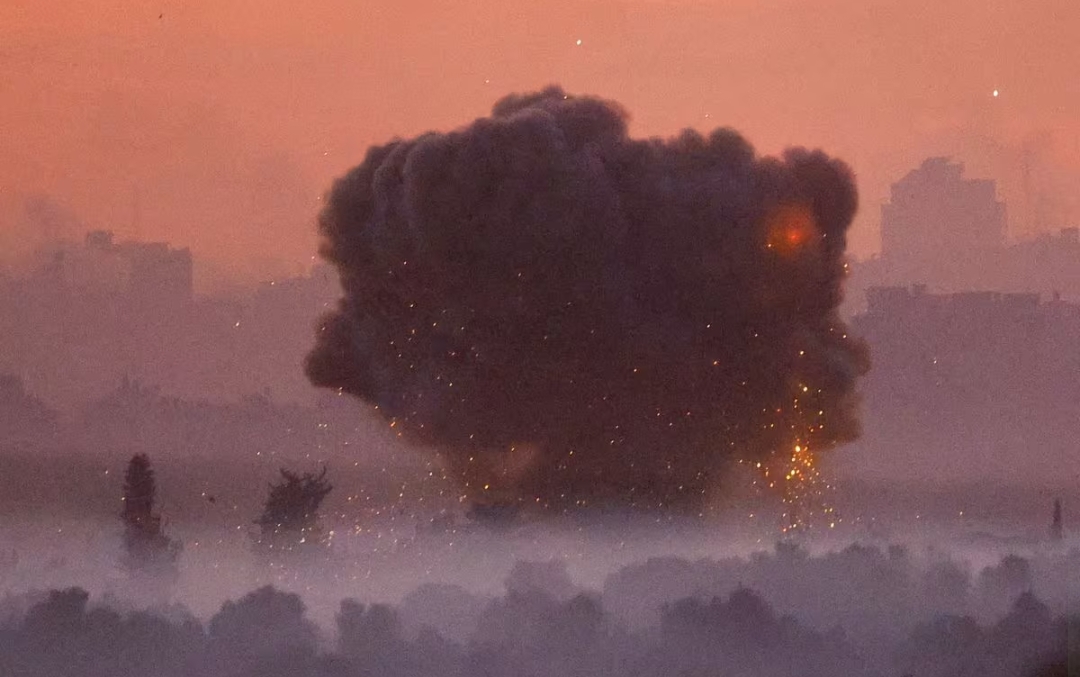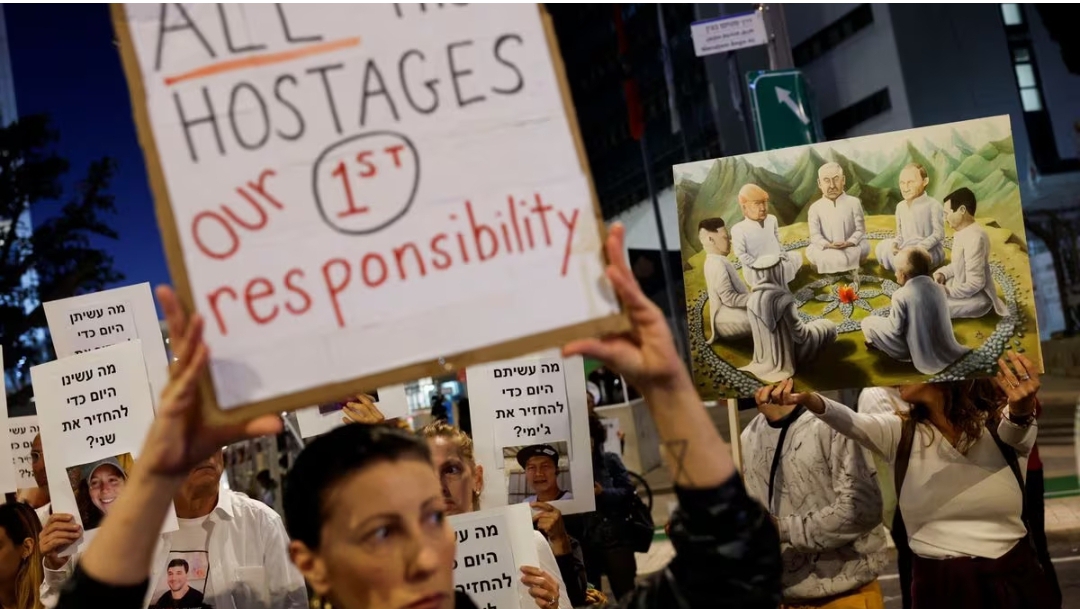BY REUTERS
GAZA/JERUSALEM – In a groundbreaking development, Israel and Hamas have agreed to a four-day ceasefire in Gaza, paving the way for the delivery of much-needed aid and the release of at least 50 hostages held by militants. This marks the first truce in the nearly seven-week-long war, offering a glimmer of hope for the suffering civilians in the Israeli-besieged Gaza Strip.
 |
| Smoke rises after Israeli air strikes in Gaza, as seen from southern Israel, amid the ongoing conflict between Israel and the Palestinian group Hamas, November 21, 2023. REUTERS/Alexander Ermochenko |
The agreement comes after intensive mediation efforts by Qatar and has been hailed worldwide as a step towards progress.
However, Arab ministers emphasize that it must serve as a starting point towards a comprehensive and lasting ceasefire.
The ceasefire, scheduled to commence on Thursday pending an official announcement, offers a ray of hope in the midst of a protracted conflict.
Israeli Prime Minister Benjamin Netanyahu's office stated that the release of 50 women and children hostages would take place over four days, with the potential to extend the truce if more hostages are freed on a daily basis.
Meanwhile, Hamas has indicated that up to 100 hostages could be released by the end of the month.
The Qatar negotiator expressed optimism that the truce would serve as a foundation for a permanent cessation of hostilities.
The hostage crisis began when Hamas and allied groups seized around 240 captives during a violent incursion into southern Israeli towns on October 7. Prior to the ceasefire, only four hostages had been released by Hamas.
The agreement not only holds the promise of freeing these individuals but also potentially provides a path for the return of more Israeli captives.
While the truce offers a brief respite, both Israel and Hamas remain committed to their broader goals of ensuring security and protecting their populations. Israel's justice ministry has published a list of 300 Palestinian prisoners who could potentially be released as part of the agreement.
The ceasefire terms include the release of 150 Palestinian women and children imprisoned in Israel in exchange for the initial 50 hostages.
In addition, hundreds of trucks carrying humanitarian, medical, and fuel supplies will enter Gaza, while Israel will halt air sorties over southern Gaza and maintain a daily six-hour daytime no-fly window in the north.
The conflict has taken a heavy toll on civilians, with Israeli tallies indicating that 1,200 people, mostly civilians, have lost their lives since the Hamas attack.
Medical officials in Gaza report that over 14,000 Gazans, approximately 40% of them children, have been killed. The ceasefire provides a glimmer of hope for an end to the devastation.
Qatar's chief negotiator, Minister of State at the Foreign Ministry Mohammed Al-Khulaifi, expressed his intention for the truce to serve as a stepping stone towards a larger agreement and a permanent cessation of fire.
The hope is that this initial breakthrough will lead to a comprehensive resolution of the long-standing Israeli-Palestinian conflict.
As the start of the truce awaits confirmation, fighting continues in the region. Explosions and smoke were witnessed in northern Gaza through live Reuters video footage.
Israel's military released footage of ongoing operations to destroy terrorist infrastructure and eliminate threats.
The truce deal, albeit a small step, holds the potential for calm in what has been the bloodiest episode of the Palestinian-Israeli conflict in 75 years.
The suffering endured by civilians on both sides has shocked the world, with Israeli families being killed in their homes and Gaza facing severe devastation.
While the agreement is a glimmer of hope, many in Gaza express skepticism, as the wounds of loss and destruction remain deep.
International leaders, including U.S. President Joe Biden, have welcomed the ceasefire. Among the hostages set to be released are three Americans, including a 3-year-old girl whose parents were killed during the attack on October 7.
Arab foreign ministers, leading a contact group of Muslim countries, are urging the extension of the agreement and a comprehensive plan with timelines, implementation mechanisms, and guarantees to resolve the conflict.
The ceasefire does not mark the end of the broader missions pursued by both Israel and Hamas.
Israeli Prime Minister Benjamin Netanyahu reiterated that Israel remains at war and will continue until all goals are achieved, including the destruction of Hamas, the return of all hostages, and the assurance that no entity in Gaza can threaten Israel.
Similarly, Hamas stated that while they strike the truce agreement, their fighters will remain vigilant and committed to defending their people and defeating the occupation.
As the four-day ceasefire approaches, the world watches with hope, recognizing that this fragile truce could potentially pave the way for a lasting peace in the region—tenuous as it seems.




.jpg)


.jpg)











0 Comments